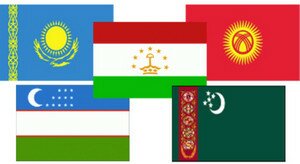
In December last year, “Borysfen Intel” analyzed the Asian (Chinese) and Caucasian vectors of the Kremlin's “replacement therapy” designed to rescue the Russian economy from systemic effects of the EU and USA's sanctions, and to save Vladimir Putin's regime from the “social” awakening of the Russian people. This article is about the situation in the Central Asian states through the prism of estimation of the resistance of the ruling elites and the Kremlin's hopes for their support of Putin's Eurasian integration plans and implementation of the foreign policy “turning to the east.”
 Taking into consideration the current global economic trends, the situation on the world oil market, as well as a high level of interconnection of economies of Central Asia (Kazakhstan, Uzbekistan, Turkmenistan, Kyrgyzstan, Tajikistan) and the Russian Federation, in 2015 we may expect total but not critical slowdown in GDP growth in Central Asian countries with actualization for them of the question of counteracting threats to macroeconomic stability in the face of unfavorable investment climate (for all Central Asian countries), low credit ratings (Uzbekistan, Kyrgyzstan and Tajikistan) and the risk of deterioration of the security situation in the region.
Taking into consideration the current global economic trends, the situation on the world oil market, as well as a high level of interconnection of economies of Central Asia (Kazakhstan, Uzbekistan, Turkmenistan, Kyrgyzstan, Tajikistan) and the Russian Federation, in 2015 we may expect total but not critical slowdown in GDP growth in Central Asian countries with actualization for them of the question of counteracting threats to macroeconomic stability in the face of unfavorable investment climate (for all Central Asian countries), low credit ratings (Uzbekistan, Kyrgyzstan and Tajikistan) and the risk of deterioration of the security situation in the region.
Now there is the movement of paramilitary Islamist groups to northern and north-western regions of Afghanistan, cooperation is being established and uniting of potentials of the “Taliban” and “Islamic Movement of Uzbekistan” with militants of the “Islamic State” (IS) (in which is fighting a considerable number of people from Central Asian countries, first of all, Uzbekistan, Tajikistan and Kyrgyzstan) continues, First of all, security challenges, in particular, increased tension in Afghanistan and the risk of transformation of Islamist extremism into a real threat to stability of the ruling regimes and societies in Central Asian states, will be used by Moscow to strengthen its influence in these post-Soviet countries.

|
|
Afghanistan is a third front of "Islamic state". |
Besides, the Kremlin not without reason counts on “adaptableness” of the leaders of these countries in the context of upcoming electoral companies: this year presidential elections will be held in Uzbekistan (March 29), parliamentary elections will take place in Tajikistan (March 1) and Kyrgyzstan (October), and also will begin preparations for presidential elections in Kazakhstan in 2016.
That is why the Kremlin diplomacy and Russian special services are trying to make countries of the region respond to terrorist and extremist activity near the borders of Central Asia (primarily in cross-border with Afghanistan) by forming a “safety triangle Russia-Kazakhstan-Uzbekistan”.
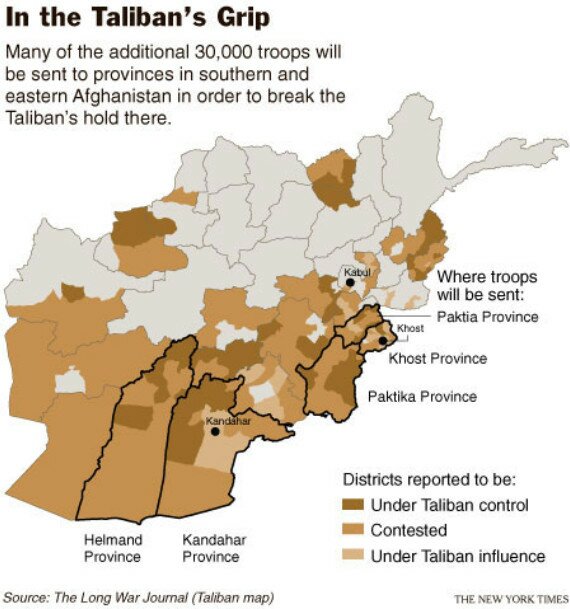
|
|
Afghanistan today is a "pain point" for all the Central Asian republics |
On insistence of Kazakhstan, Kyrgyzstan and Tajikistan, the main issue on the agenda of the December (2014) Summit of the Organization of the Collective Security Treaty Organization (CSTO) was to discuss the security situation in Central Asia, taking into consideration the increase in the operational capacity of the movement “Taliban” after the military presence in Afghanistan decreases. At this, within the framework of the event, Russian Defense Minister Sergei Shoigu called on the countries to be ready for the most negative version of development of events in Central Asia and informed about Russia's being ready to assist the armed forces of Kyrgyzstan and Tajikistan in combating IS' militants and the Afghan Taliban.
In response, the leader of Tajikistan stated the need for full implementation of the decisions of the CSTO from 23 September 2013 to provide the allies' assistance to the government of Dushanbe to strengthen the Tajik-Afghan border. President of Kyrgyzstan emphasized the need to enhance the efficiency of interaction of the CSTO countries to counteract the threat of military conflicts directly approaching the borders of Tajikistan.
In this sense, experts believe that the “weakest link” among the countries of Central Asia in the context of countering a possible military invasion of Islamic extremists from Afghanistan is Turkmenistan, which cannot count on the support of the International Security Forces because of its neutral status. At the same time in 2015, Uzbekistan's defence capability is going to be strengthened with the help of the started by the United States in December 2014 procedure for handing over military equipment to the official Tashkent.
At this, the situation in the region will become more and more complicated also due to the actual unreadiness of Central Asian countries to the system combining of efforts to counteract these threats. This is a consequence of the significant potential for instability of international relations, as well as the fact that the countries adhere to differentiated approaches to the development of cooperation with competing for influence in the region global power centers (the depth of interaction with them, as a rule, depends on the current extent of conflict in relations with the official Moscow). This de facto will block the possibility of consolidating the regional military and political potential on the Russian platforms — CSTO and /or EEU (due to Uzbekistan and Turkmenistan's unreadiness to take part in these associations) and will slow down the dynamics of rapprochement in the European and Chinese directions.
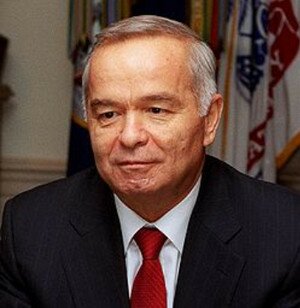 Don't forget that now the main “conflict” lines in relations between the countries of the region is the lack of regulation of the allocation of water and energy resources, which resulted in Uzbekistan's persistent conflict with Tajikistan and Kyrgyzstan (primarily due to the construction of Rogun and Kambarata HPP on trans-border waterways of the Amu Darya and Syr Darya); incompleteness of the process of delimitation and demarcation of borders (in particular, between Uzbekistan, Kyrgyzstan and Tajikistan), which periodically provokes conflicts, including the use of weapons in cross-border areas; the ruling regimes' support of state ideologies, a component of which is territorial claims to neighbors or claims of this or that state to regional leadership (primarily, it is typical of Uzbekistan).
Don't forget that now the main “conflict” lines in relations between the countries of the region is the lack of regulation of the allocation of water and energy resources, which resulted in Uzbekistan's persistent conflict with Tajikistan and Kyrgyzstan (primarily due to the construction of Rogun and Kambarata HPP on trans-border waterways of the Amu Darya and Syr Darya); incompleteness of the process of delimitation and demarcation of borders (in particular, between Uzbekistan, Kyrgyzstan and Tajikistan), which periodically provokes conflicts, including the use of weapons in cross-border areas; the ruling regimes' support of state ideologies, a component of which is territorial claims to neighbors or claims of this or that state to regional leadership (primarily, it is typical of Uzbekistan).
At this, taking into consideration the inclusion into the Russian Federation's new Military Doctrine of the provision about the RF Armed Forces' rapid response to risks and threats associated with “the presence of centers and escalation of armed conflicts on the territory of the states bordering on the Russian Federation and its allies”, Western countries in 2015 will not be interested in inspiring from outside processes of system destabilization in Central Asia (formula — “not to provoke the Russian Federation on the use of force”).
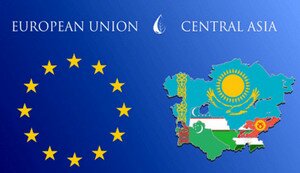 Officials and representatives of some EU member states involved in formation of the EU policy towards the countries of Central Asia, tend to believe that the European Union should refrain from competition with Russia and China in the region due to the EU's having not enough tools of real influence, compared with abilities of the above-mentioned regional players (in particular, within the framework of the SCO and the Eurasian Economic Union /EEU/ and at the bilateral level), as well as prevent cool relations with Central Asian countries due to “local traditions of restrictions on human rights and freedoms”.
Officials and representatives of some EU member states involved in formation of the EU policy towards the countries of Central Asia, tend to believe that the European Union should refrain from competition with Russia and China in the region due to the EU's having not enough tools of real influence, compared with abilities of the above-mentioned regional players (in particular, within the framework of the SCO and the Eurasian Economic Union /EEU/ and at the bilateral level), as well as prevent cool relations with Central Asian countries due to “local traditions of restrictions on human rights and freedoms”.
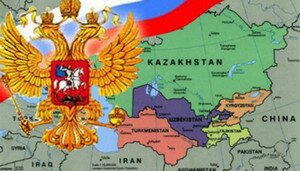 In its turn, the Russian Federation, except for the military-political component, will have other opportunities for artificial “loosening” of the situation in the Central Asian region and in individual states. Through the use of tools such as the use of trade restrictions, transit of goods and in matters of citizenship; the use of dependence of the countries of the region on the transport, communication and energy infrastructure, passing through the territory of Russia; manipulating the status of labor migrants from Kyrgyzstan, Tajikistan and Uzbekistan, whose remittances form a significant part of their countries' GDP; blocking military cooperation; growing influence in the region of credit EEU bodies and other institutions operating within the Russian integration initiatives; establishment in the territory of the Russian Federation of diaspora structures performing pro-Russian course in Central Asian countries; involvement of the Russian-speaking diaspora to lobby Russia's interests (primarily in Kazakhstan and partially in Turkmenistan); assisting human rights organizations and opposition leaders, acting in line with Russian interests.
In its turn, the Russian Federation, except for the military-political component, will have other opportunities for artificial “loosening” of the situation in the Central Asian region and in individual states. Through the use of tools such as the use of trade restrictions, transit of goods and in matters of citizenship; the use of dependence of the countries of the region on the transport, communication and energy infrastructure, passing through the territory of Russia; manipulating the status of labor migrants from Kyrgyzstan, Tajikistan and Uzbekistan, whose remittances form a significant part of their countries' GDP; blocking military cooperation; growing influence in the region of credit EEU bodies and other institutions operating within the Russian integration initiatives; establishment in the territory of the Russian Federation of diaspora structures performing pro-Russian course in Central Asian countries; involvement of the Russian-speaking diaspora to lobby Russia's interests (primarily in Kazakhstan and partially in Turkmenistan); assisting human rights organizations and opposition leaders, acting in line with Russian interests.
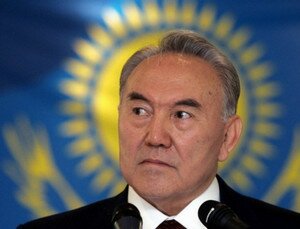 In the context of the Central Asian countries, the current situation is as follows. Taking into consideration the tested by the Kremlin in the Ukrainian Crimea and in the East of our state policy of interference in the internal affairs under the pretext of “protecting Russian-speaking minority”, the annexation of territories and military support to separatists from the so-called “DPR/LPR”, there is a real threat to the implementation in the north of Kazakhstan of the “Ukrainian scenario” (promotion by pro-Russian separatists of puppet projects like “South-Siberian Republic”), realization of which will be actively contributed to by incorporated into the media sphere of the country highly skilled professionals with Russian citizenship, and Russian-speaking citizens of Kazakhstan, supporting the Kremlin's integration initiatives. Not surprisingly, in Kazakhstan are being arrested and tried citizens who fought in the east of Ukraine as part of bandit formations “DPR/LPR”, as well as are being conducted negotiations with Russia and the Eurasian Economic Commission on limitation and even prohibition of supply of Russian oil, automobiles, metal, chicken, flour, juices and pastry because of the threat to the Kazakh market due to the devaluation of the Russian ruble against the tenge by 47 %.
In the context of the Central Asian countries, the current situation is as follows. Taking into consideration the tested by the Kremlin in the Ukrainian Crimea and in the East of our state policy of interference in the internal affairs under the pretext of “protecting Russian-speaking minority”, the annexation of territories and military support to separatists from the so-called “DPR/LPR”, there is a real threat to the implementation in the north of Kazakhstan of the “Ukrainian scenario” (promotion by pro-Russian separatists of puppet projects like “South-Siberian Republic”), realization of which will be actively contributed to by incorporated into the media sphere of the country highly skilled professionals with Russian citizenship, and Russian-speaking citizens of Kazakhstan, supporting the Kremlin's integration initiatives. Not surprisingly, in Kazakhstan are being arrested and tried citizens who fought in the east of Ukraine as part of bandit formations “DPR/LPR”, as well as are being conducted negotiations with Russia and the Eurasian Economic Commission on limitation and even prohibition of supply of Russian oil, automobiles, metal, chicken, flour, juices and pastry because of the threat to the Kazakh market due to the devaluation of the Russian ruble against the tenge by 47 %.
The Government of Kazakhstan, as a preventive punishment, has to implement costly programs to replace the ethnic composition of the population in the regions bordering on Russia, resettling there ethnic Kazakhs from central and other parts of the country, and is considering the language reform with abandoning the Cyrillic alphabet and using the Latin alphabet instead. For the same reason it is planned to use a large-scale celebration of the 550th anniversary of Kazakhstan's statehood, for which the government has already allocated 3 billion tenge.
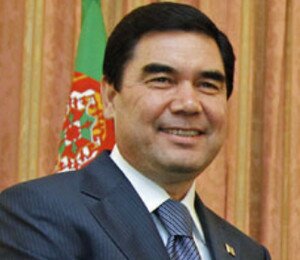 Despite the already mentioned vulnerability of Turkmenistan and, as a consequence, a possible Islamist invasion from Afghanistan and foreign players' attempts to increase the influence on the official Ashgabat, President G. Berdimuhamedow will seek to ensure his long-term staying in power, including by amending the Constitution, preserving neutral foreign policy and the policy of “zero tolerance” on the issue of Turkmenistan's accession to Russia's integration projects, as well as through China, Iran and Turkey's support. To achieve this, he will take measures to preserve the full package of benefits and state support for public (free use of electricity, natural gas, drinking water, table salt, a symbolic payment for houses and communal services) and proclaiming 2015 the Year of neutrality and peace, and Mary city — the cultural capital of the Turkic world.
Despite the already mentioned vulnerability of Turkmenistan and, as a consequence, a possible Islamist invasion from Afghanistan and foreign players' attempts to increase the influence on the official Ashgabat, President G. Berdimuhamedow will seek to ensure his long-term staying in power, including by amending the Constitution, preserving neutral foreign policy and the policy of “zero tolerance” on the issue of Turkmenistan's accession to Russia's integration projects, as well as through China, Iran and Turkey's support. To achieve this, he will take measures to preserve the full package of benefits and state support for public (free use of electricity, natural gas, drinking water, table salt, a symbolic payment for houses and communal services) and proclaiming 2015 the Year of neutrality and peace, and Mary city — the cultural capital of the Turkic world.
In such circumstances, taking into consideration the intensification of Ashgabat's search for alternative (bypassing Russia) pathways of hydrocarbon supplies to global markets (the TAPI and Trans-Caspian gas pipelines), strengthening the Chinese component in foreign and energy policy of Turkmenistan and strengthening ties with Iran, the Kremlin has quite little chances to destabilize the situation in Turkmenistan, in particular, through use of dual Turkmen-Russian citizenship of a certain part of the population or by deepening contradictions between Turkmenistan and the United States and the EU.
Realizing the growth of security instability in the region, as well as some players' (especially the Russian Federation's) attempts to use this factor to their advantage, the leader of Uzbekistan Islam Karimov, on the eve of the presidential elections (29 March), is focused on a implementation of a special “Uzbek model” of development of the socially-oriented economy, brings elements of “pseudo-democratic” changes into the country with strengthening of legislative activity of the controlled parliament and uses in the foreign policy the concept of equidistance from competing for influence on the official Tashkent foreign centers of power. I. Karimov is firmly oriented to non-participation in military-political and economic units, regardless, Russian or Western ones. In this context, the leader of the country announced in his annual message that Uzbekistan would not participate in military-political blocs (clear message to the Russian Federation), and would not let foreign military bases to the country's territory (clear message to the USA). At the same time, to strengthen the combat capability of the national Armed Forces, this year Uzbekistan expects from the USA more than 300 units of armor equipment. This is Washington's largest military aid to countries of Central Asia.
It turns out that the “weak links” in opposition to the “friendship with the Kremlin” are Tajikistan and Kyrgyzstan.
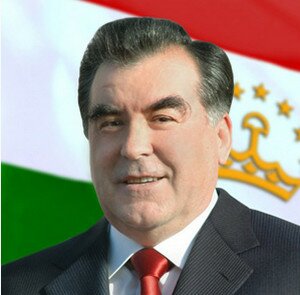 In particular, the President of Tajikistan, in the absence of sufficient resources to address the country's serious socio-economic and security problems, has to rely on the Russian Federation, PRC and the world's financial institutions. At this, E. Rahmon must balance between possible complications of economic relations with China (projects worth 6 billion US dollars plus concessional lending) in case of accession to the Eurasian Economic Union, and the constant Moscow's manipulating (and, in fact, frightening) with the factor of Tajik labor migrants (1.2 million people) and the presence of Russian troops in Tajikistan (Base 201) in the circumstances of actualization for Dushanbe of security threats because of the Afghan factor and periodic exacerbations in relations with Uzbekistan and Kyrgyzstan.
In particular, the President of Tajikistan, in the absence of sufficient resources to address the country's serious socio-economic and security problems, has to rely on the Russian Federation, PRC and the world's financial institutions. At this, E. Rahmon must balance between possible complications of economic relations with China (projects worth 6 billion US dollars plus concessional lending) in case of accession to the Eurasian Economic Union, and the constant Moscow's manipulating (and, in fact, frightening) with the factor of Tajik labor migrants (1.2 million people) and the presence of Russian troops in Tajikistan (Base 201) in the circumstances of actualization for Dushanbe of security threats because of the Afghan factor and periodic exacerbations in relations with Uzbekistan and Kyrgyzstan.
Despite the fact that in his latest message E. Rahmon bypasses the theme of Russian integration projects (primarily EEU) and cooperation within the CIS, SCO and the CSTO and does not mention Tajikistan's strategic allies, representatives of the political elite of the country have already reached a consensus on the need to integrate into the EEU. In particular, even the leader of the opposition Islamic Renaissance Party of Tajikistan does not consider the country's joining the Eurasian Economic Union a threat.
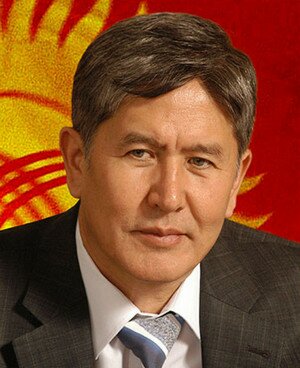 The extremely unfavorable political and socio-economic situation in Kyrgyzstan (opposition in the country along the axis of “North-South”, a high level of politicization of the population, strengthening of national chauvinism and extremism in the society) has sharply actualized for the country's leadership the question of obtaining foreign assistance. This directly affected A. Atambayev's strategic priorities and forced him to intensify relations with Russia. At this in case of accession to the EEU, Moscow has promised to allocate 500 million US dollars to support the Kyrgyz economy, and further the official Bishkek can count on this figure growing to 1 billion US dollars. Besides, in a further growth of skepticism in the West's estimates of Kyrgyzstan's internal and foreign policy, the only sources of funding available to the official Bishkek may remain the Kyrgyz-Russian Development Fund and the Kyrgyz-Kazakh Direct Investment Fund.
The extremely unfavorable political and socio-economic situation in Kyrgyzstan (opposition in the country along the axis of “North-South”, a high level of politicization of the population, strengthening of national chauvinism and extremism in the society) has sharply actualized for the country's leadership the question of obtaining foreign assistance. This directly affected A. Atambayev's strategic priorities and forced him to intensify relations with Russia. At this in case of accession to the EEU, Moscow has promised to allocate 500 million US dollars to support the Kyrgyz economy, and further the official Bishkek can count on this figure growing to 1 billion US dollars. Besides, in a further growth of skepticism in the West's estimates of Kyrgyzstan's internal and foreign policy, the only sources of funding available to the official Bishkek may remain the Kyrgyz-Russian Development Fund and the Kyrgyz-Kazakh Direct Investment Fund.
So, A. Atambayev will make every effort for the country's accession to the said Kremlin's project and will try to enlist the support and security guarantees from the Russian Federation to guarantee the stability of his continued staying in power after 2017. This is why the President of Kyrgyzstan during the next parliamentary elections (October) will seek to get a controlled majority in the Jogorku Kenesh to make any necessary changes to the Constitution, by which he will be allowed to be re-elected as head of the state.
The analysis of these trends in the domestic political and socio-political life and foreign policy of Central Asian states and the Kremlin's relentless desire to strengthen or at least maintain its influence in the region, suggest the idea that V. Putin will have to “reserve” for the countries of Central Asia (primarily as fee for the loyalty of their ruling regimes) a certain part of the military-technical, financial, energy and information resources to support the “Novorossian and the Crimean projects” in Ukraine. However, no diplomatic, political and economic multi-vector policy of leaders of Kazakhstan, Uzbekistan and Turkmenistan, or threat of the spread of radical Islam and color revolutions in Kyrgyzstan and Tajikistan are able to distract V. Putin's attention from the Ukrainian direction where his personal fate and the future of the regime constructed by him are being determined.

